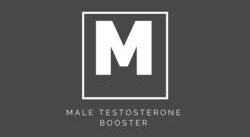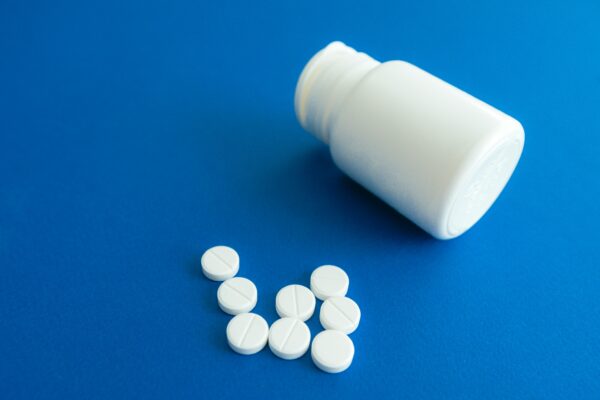Erectile dysfunction (ED) is a condition affecting millions of men worldwide, profoundly impacting their physical and emotional well-being. A crucial factor influencing erectile function is testosterone, a hormone vital for male sexual health. In this comprehensive guide, we delve into the intricate relationship between testosterone and erectile dysfunction, providing detailed insights and actionable information to help you understand and address this condition effectively.
- Understanding Testosterone: The Male Hormone
- The Role of Testosterone in Sexual Health
- Causes of Low Testosterone
- Erectile Dysfunction: A Multifaceted Condition
- The Complex Link Between Testosterone and Erectile Dysfunction
- Diagnosing Low Testosterone and Erectile Dysfunction
- Treatment Options for Low Testosterone and Erectile Dysfunction
- The Importance of Early Intervention
- Conclusion: Navigating Testosterone and Erectile Dysfunction
- FAQs: Testosterone and Erectile Dysfunction
- Question: How does testosterone affect erectile function?
- Question: Can low testosterone cause erectile dysfunction?
- Question: What are the symptoms of low testosterone?
- Question: How is low testosterone diagnosed?
- Question: What treatment options are available for low testosterone and erectile dysfunction?
- Question: Is testosterone replacement therapy (TRT) safe?
- Question: How long does it take to see improvements with testosterone therapy?
Understanding Testosterone: The Male Hormone
Testosterone is the primary male sex hormone, essential for developing male reproductive tissues and secondary sexual characteristics. Produced mainly in the testes, testosterone levels peak during adolescence and early adulthood, then gradually decline with age. This hormone plays a critical role in various bodily functions, including:
- Muscle Mass: Building and maintaining muscle.
- Bone Density: Strengthening bones.
- Red Blood Cell Production: Enhancing oxygen transport in the body.
- Sexual Function: Regulating libido, arousal, and erectile function.
The Role of Testosterone in Sexual Health
Testosterone significantly influences sexual desire and erectile function. It stimulates receptors in the brain to produce nitric oxide, a molecule that initiates the chain of events leading to an erection. Low testosterone levels can impair this process, resulting in reduced sexual desire and difficulties in achieving or maintaining an erection.
Causes of Low Testosterone
Several factors contribute to low testosterone levels, including:
- Aging: Natural decline starts around age 30, decreasing approximately 1% per year.
- Medical Conditions: Chronic illnesses like diabetes, obesity, and metabolic syndrome can lower testosterone levels.
- Medications: Certain medications, including opioids, corticosteroids, and some antidepressants, can negatively impact testosterone production.
- Lifestyle Factors: Poor diet, lack of exercise, smoking, and excessive alcohol consumption can contribute to reduced testosterone levels.
Erectile Dysfunction: A Multifaceted Condition
Erectile dysfunction is the inability to achieve or maintain an erection sufficient for satisfactory sexual performance. It can result from various factors, including psychological, neurological, hormonal, and vascular issues. While testosterone deficiency is not the sole cause of ED, it can significantly contribute to the condition.
The Complex Link Between Testosterone and Erectile Dysfunction
Low testosterone levels can lead to decreased sexual desire and erectile dysfunction. However, the relationship between testosterone and ED is complex. Some men with low testosterone may experience severe ED, while others may have normal erectile function. This discrepancy suggests that other factors, such as vascular health and psychological state, also play critical roles in erectile function.
Diagnosing Low Testosterone and Erectile Dysfunction
Diagnosing low testosterone involves a comprehensive evaluation, including:
- Medical History: Reviewing symptoms and lifestyle factors.
- Physical Examination: Checking for signs of low testosterone.
- Blood Tests: Measuring hormone levels, including total and free testosterone.
Symptoms of low testosterone can overlap with other conditions, making accurate diagnosis essential. Symptoms to watch for include:
- Decreased libido
- Fatigue and decreased energy levels
- Depressed mood
- Loss of muscle mass
- Increased body fat
For erectile dysfunction, a thorough assessment is necessary to identify underlying causes. This may include:
- Physical Examination: Evaluating penile structure and sensitivity.
- Blood Tests: Checking for diabetes, cholesterol levels, and other health markers.
- Psychological Evaluation: Assessing for stress, anxiety, or depression.
- Penile Ultrasound: Assessing blood flow to the penis.
Understanding Testosterone Testing: When and How to Get Checked
Treatment Options for Low Testosterone and Erectile Dysfunction
Treatment depends on the underlying causes and severity of symptoms. Common options include:
- Testosterone Replacement Therapy (TRT):
- Methods: Injections, gels, patches, or pellets to supplement testosterone levels.
- Benefits: Can restore testosterone levels, improve libido, and enhance erectile function.
- Risks: Requires careful monitoring due to potential side effects, such as increased red blood cell count and cardiovascular risks.
- Medications:
- PDE5 Inhibitors: Drugs like sildenafil (Viagra), tadalafil (Cialis), and vardenafil (Levitra) increase blood flow to the penis, helping to achieve and maintain an erection.
- Combination Therapy: Often used in conjunction with TRT for men with low testosterone.
- Lifestyle Changes:
- Exercise: Regular physical activity boosts hormone production and improves cardiovascular health.
- Diet: A balanced diet rich in nutrients supports overall health.
- Quit Smoking: Eliminating tobacco use improves vascular health.
- Limit Alcohol: Reducing alcohol intake can enhance testosterone levels and sexual function.
- Psychological Counseling:
- Therapy: Counseling can address anxiety, depression, and relationship issues, improving sexual function and overall well-being.
- Alternative Treatments:
- Herbal Supplements: Some men explore natural remedies, though their effectiveness varies. Consult a healthcare provider before starting any alternative therapy.
- Acupuncture: Some evidence suggests acupuncture may help with ED, but more research is needed.
The Importance of Early Intervention
Early intervention is key to managing low testosterone and erectile dysfunction effectively. Men experiencing symptoms should seek medical advice promptly to determine the underlying causes and appropriate treatment options. Delaying treatment can lead to a decline in quality of life and potentially exacerbate the condition.
Vaping and Erectile Dysfunction: The Shocking Connection Revealed
Conclusion: Navigating Testosterone and Erectile Dysfunction
The relationship between testosterone and erectile dysfunction is intricate and multifaceted. While low testosterone can contribute to ED, it is often one of several factors involved. Understanding testosterone’s role in sexual health and seeking timely medical intervention can help men manage symptoms and improve their overall quality of life. With appropriate treatment, many men can regain their sexual function and confidence.
The Link between High Blood Pressure and ED: Understanding the Connection and Treatment Options
Studies and Sources
- Understanding Testosterone: The Male Hormone
- Mayo Clinic: Testosterone: What It Does and Doesn’t Do
- The Role of Testosterone in Sexual Health
- Journal of Clinical Endocrinology & Metabolism: Testosterone and Erectile Function: From Basic Research to a Clinical Perspective
- Causes of Low Testosterone
- Cleveland Clinic: Low Testosterone (Male Hypogonadism)
- WebMD: Low Testosterone (Low T) – Causes
- Erectile Dysfunction: A Multifaceted Condition
- National Institutes of Health: Erectile Dysfunction
- Harvard Medical School: The Facts About Erectile Dysfunction
- The Complex Link Between Testosterone and Erectile Dysfunction
- Urology Care Foundation: Low Testosterone and Men’s Health
- European Urology: The Relationship Between Testosterone and Erectile Dysfunction
- Diagnosing Low Testosterone and Erectile Dysfunction
- Treatment Options for Low Testosterone and Erectile Dysfunction
- Endocrine Society: Testosterone Therapy in Men with Hypogonadism: An Endocrine Society Clinical Practice Guideline
- National Institute of Diabetes and Digestive and Kidney Diseases: Treatment for Erectile Dysfunction
- The Importance of Early Intervention
“`html
FAQs: Testosterone and Erectile Dysfunction
Question: How does testosterone affect erectile function?
Testosterone plays a crucial role in male sexual health, including libido and erectile function. It stimulates receptors in the brain to produce nitric oxide, which is essential for the process leading to an erection. Low levels of testosterone can impair this process, leading to erectile dysfunction.
Question: Can low testosterone cause erectile dysfunction?
Yes, low testosterone can contribute to erectile dysfunction. Testosterone deficiency can reduce sexual desire and affect the physiological mechanisms that enable an erection. However, ED can also be caused by other factors such as vascular issues, psychological conditions, or medication side effects.
Question: What are the symptoms of low testosterone?
Symptoms of low testosterone include decreased libido, fatigue, depression, reduced muscle mass, increased body fat, and difficulties with erection. It’s important to consult a healthcare provider for a proper diagnosis if you experience these symptoms.
Question: How is low testosterone diagnosed?
Low testosterone is diagnosed through a combination of medical history, physical examination, and blood tests that measure hormone levels. It’s essential to measure testosterone levels in the morning when they are typically at their highest.
Question: What treatment options are available for low testosterone and erectile dysfunction?
Treatment options for low testosterone include testosterone replacement therapy (TRT) through injections, gels, patches, or pellets. For erectile dysfunction, medications such as PDE5 inhibitors (e.g., Viagra, Cialis) are commonly used. Lifestyle changes, such as regular exercise, a healthy diet, and quitting smoking, can also help. Psychological counseling may be beneficial if psychological factors contribute to ED.
Question: Is testosterone replacement therapy (TRT) safe?
Testosterone replacement therapy can be effective but carries potential risks, including increased red blood cell count, sleep apnea, acne, and an elevated risk of cardiovascular issues. It’s important to have TRT administered and monitored by a healthcare professional to mitigate these risks.
Question: How long does it take to see improvements with testosterone therapy?
Improvements from testosterone therapy can vary among individuals. Some men may notice improvements in symptoms such as energy levels, libido, and mood within a few weeks, while full benefits may take several months to become evident.
“`
Testosterone and Prostate Cancer: Understanding the Controversies and Realities
.





